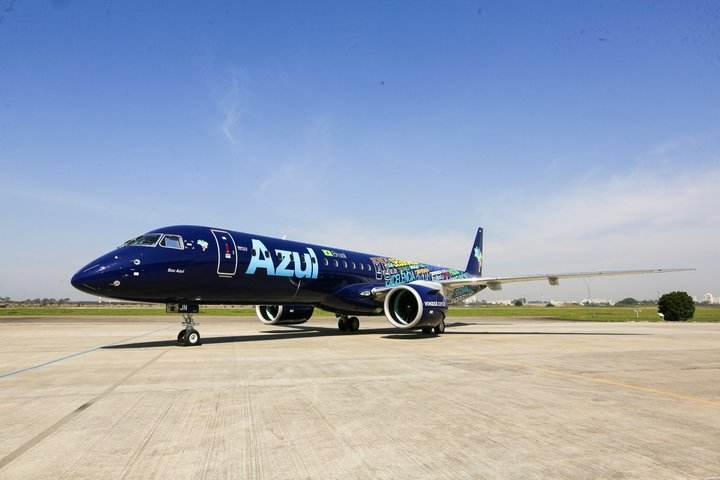The Brazilian airline Azul has received its first Embraer E-195-E2 via the leasing company AerCap. Five more copies are scheduled by the end of this year.
The Embraer E195-E2 makes its debut in operation. Following a tour through China, Japan, and Asia Pacific, to finally appear at the MAKS 2019 Air Show, the E195-E2 has just joint Azul’s fleet. Its “little brother”, the Embraer E190-E2, is already into service in Europe within the Norwegian regional airline Wideroe which fleet now includes three of them, leased by AerCap. Azul received the first Embraer E195-E2 through the same lessor. The Brazilian airline ordered a total of 51 copies. As for AerCap, it is the second largest customer with 45 firm ordered aircraft. Azul will receive five more E195-E2 aircraft by the end of this year and plans to deploy the aircraft on several domestic and international routes.
John Rodgerson, CEO of Azul, specified how the aircraft is part of the evolution of the airline: “It is very exciting to us, as a Brazilian company, to be the first airline to fly this incredible aircraft. The E2 fleet is part of our fleet transformation plan. The E2 guarantees that Azul will have the newest, most fuel efficient fleet in the industry, continually driving down unit costs.”
The Embraer E195-E2 is powered by Pratt & Whitney PW1900G engines. Its maximum range is 4,815 km (2,600 NM) with a full passenger load. The cabin can be configured with 120 seats in two classes, or up to 146-seats in a single class layout. Azul has chosen a single class layout for 136 passengers.
This year, at the 53rd edition of the Paris Air Show, Embraer and Azul also signed a long-term Flight Hour Pool Program agreement to provide repairable component support for the carrier’s new fleet of Embraer E195-E2 jets. Moreover, the airline recently joined the Repair Management Program. With the new Flight Hour Pool Program agreement, the airline will now have coverage for its entire Embraer fleet. Furthermore, like the E190-E2, the E195-E2 has a maintenance interval of 10,000 flight hours for basic checks and no calendar limit for typical E-Jet operations. This means an additional 15 days of aircraft utilization over a period of ten years compared to current generation E-Jets.

